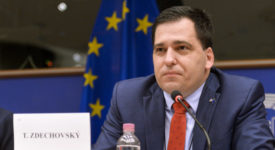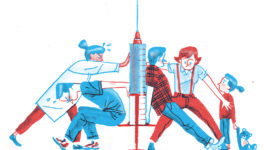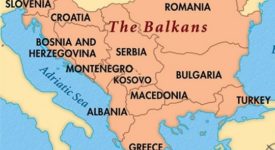There was a short-lived moment almost fifteen years ago when we all thought that the European Commission was going to seriously reconsider its own image and the way it wants to present itself to the general public. During the first press conference of its jovial new President, José Manuel Barroso, there were some signs that changes might soon be coming in the way Brussels is seen.
The Euroscepticism, which has been very much present for quite a while, owes itself mainly to the EU’s inability to communicate. This is certainly quite an issue because it threatens the wider cause of the European integration. So how can the bureaucracy turn itself into a persuasive and trustworthy source of information? The Commission must simply stop doing what it does. Mr. Barroso’s promises of a communication revolution were fulfilled but not in a shape or form that we hoped for. Instead of better, clearer information, we just got more of the same.
The most pressing question is still this one – “What is the EU for?” – and the task of explaining this question should still be the bread and butter. Yes, anyone who has received any kind of financing from the EU is well aware of what it does and what it is for, but ask any of the European electorates and nine out of ten of them will certainly not know the answer. And even if the European Parliament’s secretariat is doing a good work with its approach to information and social media, there are still some things that the EU institutions and leadership should to if they want to successfully rebrand themselves and save the European project.
The first thing to do would be to provide a constant stream of good news. It’s good to pat yourself on the back sometimes, but that almost never tells us about how things are going, which problems we have successfully overcome and which problems we are going to face in the near future. Even if this means some bad news from time to time, this can only lead to the EU becoming better in the future, as it will learn from its mistakes. Second, the brochures need to go. They just add up to the unnecessary bureaucracy and are usually a waste of money. This could not only help the EU improve its image but also take the wind of the sails of all Eurosceptics, who still ask the “What is EU for?” question.
The third one is quite simple: the EU needs to stop hiring part-timers. Instead, it needs journalist and social media experts. There will most certainly be less sugarcoating but we’re talking about people that have been in this business for years and they know how to use these things to their advantage. They also know that there is no such person as a “European”. Europe is a giant melting pot of various nations and cultures and they should be addressed as such, not just as general Europeans. And while we’re on the topic of media, the EU must definitely broaden its media coverage. The Brussels-based EU-accredited journalists are certainly professionals but they don’t have as strong influence on the public opinion as local and regional media do.
The last one should be a new symbol – the blue flag and the Ode to Joy just aren’t enough. On the other hand, the constant messages are too much and they only cause confusion. Something that is both eye-catching and instantly recognizable, such as the logos of the Internet giants, would surely do the trick. Children should be the main targets as they are the voters of tomorrow and the teaching kits about the European Union should be a main stay in all secondary schools, in all official languages.
‘What the EU Must Do to Be Loved and Admired’ – Op-Ed by Giles Merritt – Friends of Europe.
(The Op-Ed can be downloaded here)







